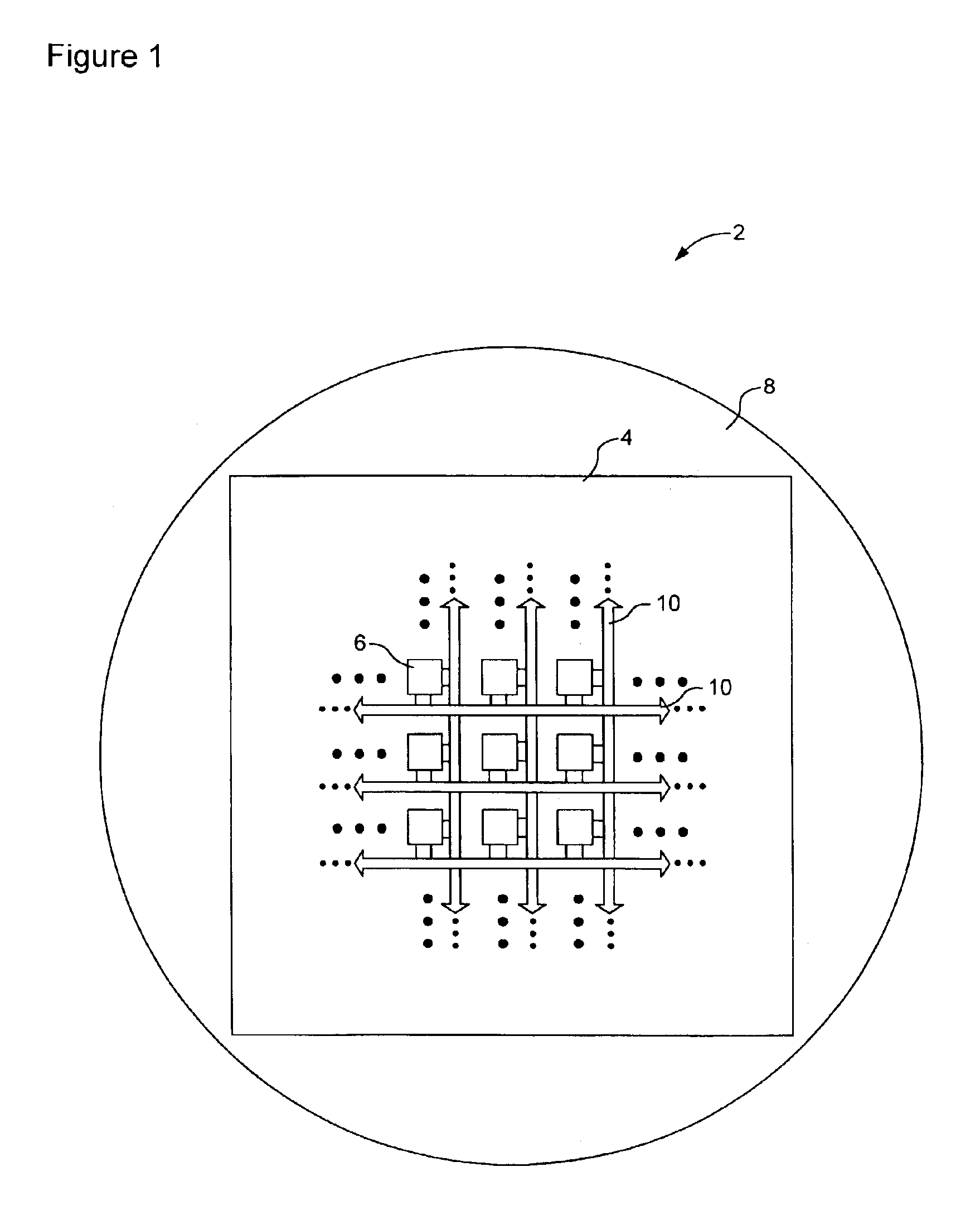Fault tolerant scan chain for a parallel processing system
a parallel processing system and scan chain technology, applied in the field of parallel processing systems, can solve the problems of affecting system performance, affecting system speed, increasing system noise, etc., and achieve the effect of high-grade fault toleran
- Summary
- Abstract
- Description
- Claims
- Application Information
AI Technical Summary
Benefits of technology
Problems solved by technology
Method used
Image
Examples
Embodiment Construction
[0034]The present invention provides a fault tolerant scan chain for a wafer-scale parallel processing system. FIG. 1 schematically illustrates principle features of an exemplary wafer-scale parallel processing system in which the present invention may be deployed.
[0035]As shown in FIG. 1, the wafer-scale parallel processing system 2 generally comprises a rectangular (other shapes are possible) matrix 4 of substantially identical cells 6 disposed on a wafer 8 (or, more broadly, a substrate 8). A mesh of communications busses 10 link the cells 6 and carry data signals between cells 6 within the matrix 4, and between the matrix 4 and external devices (not shown). Each communications bus 10 is associated with a respective set (i.e., a row or a column) of cells 6, and includes a plurality of parallel channels (not shown), which may be configured to carry serial or parallel data signals. Each communications bus 10 includes a respective access point for each one of its associated cells 6,...
PUM
 Login to View More
Login to View More Abstract
Description
Claims
Application Information
 Login to View More
Login to View More - R&D
- Intellectual Property
- Life Sciences
- Materials
- Tech Scout
- Unparalleled Data Quality
- Higher Quality Content
- 60% Fewer Hallucinations
Browse by: Latest US Patents, China's latest patents, Technical Efficacy Thesaurus, Application Domain, Technology Topic, Popular Technical Reports.
© 2025 PatSnap. All rights reserved.Legal|Privacy policy|Modern Slavery Act Transparency Statement|Sitemap|About US| Contact US: help@patsnap.com



